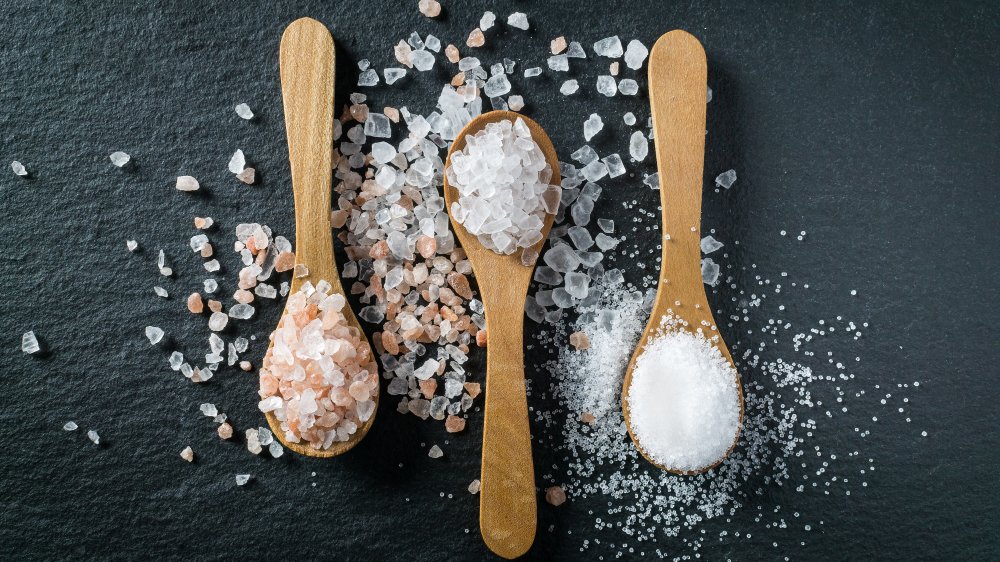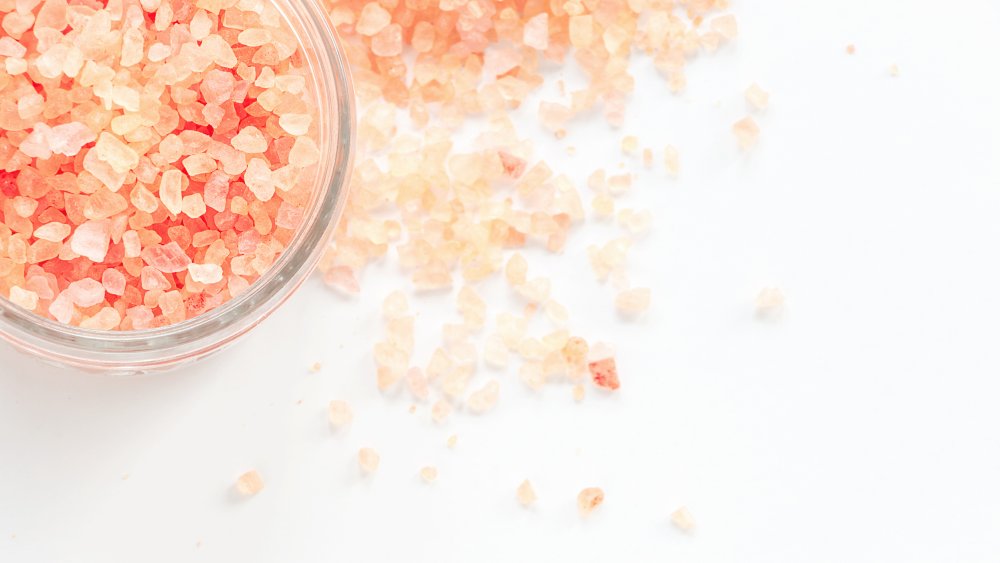The Real Difference Between Table Salt And Himalayan Salt
Sodium is an essential nutrient for life, according to the American Heart Association, which recommends no more than 2,300 milligrams of sodium per day. The association points out that the average American eats 3,400 milligrams of sodium per day, with 70 percent of that sodium coming from packaged foods, not the salt shaker on their dining room table.
In recent years, the conversation has turned to the difference between salts. Table salt has only been around for the last 100 years or so. Before that, salt was a rare commodity that wars were fought over (via UCHealth Today). Thanks to mining, manufacturing, transportation, and chefs, we now have broader access to international ingredients and many salts to choose from. But what is the difference between table salt and pink Himalayan salt? Is one better for us? Do they have the same sodium content? And does Himalayan salt really have beneficial nutrients that table salt does not?
Is Himalayan salt better or worse than table salt?
We all know that Himalayan salt costs more than table salt, but is there a big difference in the salt itself, other than it being a pretty pink color? For starters, table salt contains added iodine for thyroid health, as well as anti-caking agents to help it flow, according to Seattle Sutton's. Himalayan pink salt has trace amounts of minerals such as potassium, calcium and magnesium, which table salt does not. However, the amount of minerals is so low, nutrition labels for Himalayan salt usually state that a serving contains zero percent of the daily value of each nutrient (via VeryWell Fit). Speaking of undetectable elements, Himalayan pink salt may also contain small amounts of arsenic, uranium, and lead (via Vice).
The difference in the sodium content of table salt versus Himalayan pink salt is also negligible. The USDA reports regular table salt having 581 milligrams of sodium per 1/4 teaspoon and Himalayan pink salt having 388 milligrams of sodium per 1/4 teaspoon. Yes, that's different, but only because pink salt is coarser. The amount of sodium in table salt and Himalayan pink is the same by weight. So choose the salt that you like the best, and eat it in moderation.

